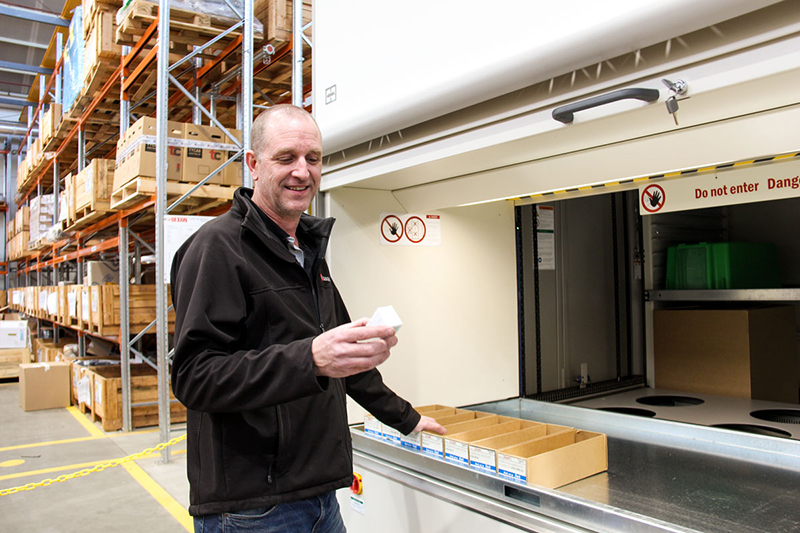How to develop key performance indicators for manufacturing maintenance
SAGE Automation, Published: March 8, 2018 - Updated: October 13, 2023 (6 min read)
In large scale operations or small workshop environments the right manufacturing maintenance KPIs can have enormous impact on operability and maintainability.
‘Maintenance’ itself can be appraised in two ways:
1. ‘doing the right maintenance’ – i.e the type of maintenance you do should bring higher reliability and efficiency
and
2. ‘doing maintenance right’ – i.e the way you do maintenance should bring increased reliability with less resources.
Maintenance KPIs can help:
- pinpoint the root cause of failure
- understand where production losses occur
or
- understand the effectiveness of manufacturing maintenance programs
In this article, we explore how to develop the right KPIs for manufacturing maintenance that will ultimately impact your operational bottom line.
1. Identify what you want to measure
Understand what you want to improve and why. Are you most concerned with improving quality output, measuring maintenance delivery time, or maximising equipment reliability? Your KPIs should be driving these objectives as well as being in line with business objectives.
For example, a business objective of increased availability, might mean developing KPI's in terms of maintenance quality, prediction of failure or scheduled maintenance versus unplanned maintenance.
A few essential maintenance KPI that could be used to measure other outcomes are:
- Equipment reliability: e.g. Mean Time Between Failure (MTBF), percentage planned work, percentage emergency work,
- Maintenance quality: e.g. number of ‘rework’ work orders, training courses completed by maintenance staff, or backlog size by work order type (Preventive, Predictive, Corrective, Proactive, Reactive).
- Speed of response: e.g. percentage of planned work, proportion of work orders performed when first scheduled
- Maintenance costs: e.g. maintenance cost spent per asset,
- Prediction of failure: e.g. percentage of emergency work over time, percentage planned work order compliance
2. Pick your KPIs: but not too many
Every operation and business is different, so consider these tips when selecting maintenance KPIs:
- KPIs take resources to gather, analyse and report and draw insights on. So, choose as few maintenance KPIs as possible, but enough to get a good picture of what’s happening.
- Useful improvement measures should either improve manufacturing maintenance’s impact on performance and/or drive good behaviours.
- Ensure you understand what can be measured (step 4). If you can’t measure it, it can’t be a KPI.
- Don’t set KPIs you or your maintenance team cannot directly influence. E.g. operational productivity is influenced by more than just maintenance – capital project design or operator practices are other influencers.
- Select maintenance KPIs that support key business strategy
- Select a mixture of lagging and leading performance indicators. E.g. lagging ‘output indicators’ like machine downtime, complements leading ‘input indicators’, such as preventative maintenance tasks completed.
3. Make sure your selected KPIs are meaningful and valuable
Collecting data and writing reports is useless if no one uses them.
KPIs should be easy to read, accessible and drive action for staff.
Your communication of KPIs to staff is equally as important as the results themselves as KPIs can be staff motivators and will clearly outline maintenance priorities for the business.
4. Set your benchmarks
There’s no point to a performance metric without setting a benchmark value for passable performance.
Research appropriate values to designate for your own industrial context. This might involve calling around and asking others what they’re doing.
A word of caution: If you’re not a world class operation, don’t aim for world class benchmarks. Regularly review your local benchmarks and increase them as they are being met.
5. Ensure there’s a way to collect information
Information is king. If you can’t measure it, you can’t manage it – and if you can’t manage it, you can’t improve it.
Set up new data collection processes and measurement systems for new KPIs. Some approaches:
Manual data collection: If this is all you can do, run training sessions on the importance of data collection. If staff don’t see the value in collecting data, there will be quality issues.
Automated data collection: A sure-fire way to improve data quality is through automated data collection. Bear in mind, most companies are data rich but information poor. Collect only what you need and ensure the output is in a readable format. Manufacturing Execution Systems and Manufacturing Information Systems or even your SCADA system can be harnessed to feed into KPIs – and improvement activities.
Integrated data analysis: Manufacturers are all working towards digitisation to reduce the time it takes to maintain and operate assets. In a connected plant, sensors can send alerts to operators via mobile devices or wearables, time-series data and machine learning can feed into predictive maintenance regimes, and IT and OT systems integration can help provide whole-of-business insights.
There’s a big difference between simply collecting KPIs for performance measurement and collecting data to analyse and show where the business can improve.
In the end, manufacturing maintenance-driven KPIs should help managers:
- understand current processes
- aim for a higher level
- show where improvements can be made
When a machine stops, it can quickly escalate to calling in external help – sometimes unnecessarily. The Breakdown Checklist is designed to get you back online faster. It will get your team thinking about what caused the breakdown and assess the need for external advice. Download the free downtime checklist here.
SAGE Automation delivers agile, scalable, and secure solutions that don’t just solve current problems, they preempt and deter future ones, helping your organisation thrive. With years of experience working in defence, infrastructure, resources, utilities and manufacturing we have the expertise for control panel design and switchboard manufacturing. And we perform manufacturing maintenance on your equipment for maximum ROI.








